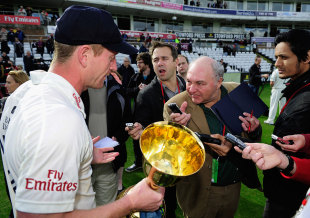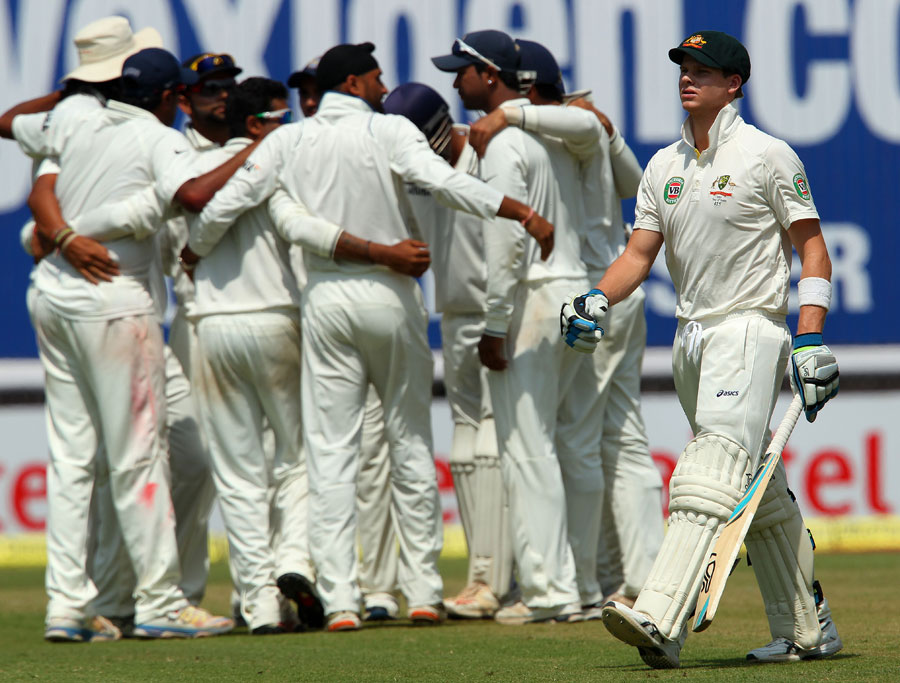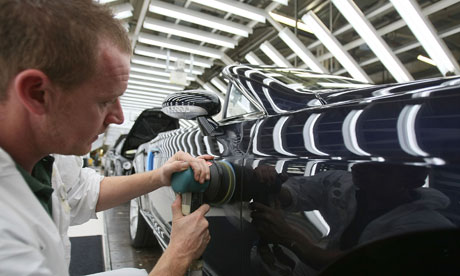The media wants constant access to players, and insights and honesty from them, but this desire can only cheapen the experience of sport
Ed Smith in Cricinfo
January 15, 2014

| |||
Indulge me a splash of global economics before we get to the serious question of cricket. My theme is the imbalance between inflated surface value and underlying reality - and how that imbalance can have serious long-term consequences.
In 2006 the measured economic output of the world was $47 trillion. In the same year, the total market capitalisation of the world's stock markets was $51 trillion - 10% larger. And the amount of derivatives outstanding was $473 trillion, more than ten times larger. In other words, the spin-off industry - finance - that is derived from the actual economy had become ten times bigger than the underlying economy itself.
"Planet Finance," in Niall Ferguson's phrase, "dwarfed Planet Earth." With size, clout followed, as finance established a hold over government and policy. The financial services industry, once a utility that sustained other industries, had learned to serve itself instead. We know how that story developed: crash, crisis, recession.
A similar trend is happening to the relationship between sport - real sport - and the sports media. The sports media, which once served sport by bringing it to a wider audience, has become the master of that relationship. Sport now addresses the question of how it must serve the media far more often than the media asks how it might serve sport.
I am arguing, to a degree, against my own interests. Part of my living is derived from sports broadcasting and sports-writing - this column, for example. But I hope I am close enough to my playing days, and sufficiently detached from the whole scene, to observe independently how sport is evolving.
Here are some concerns I have about the relationship between the media and sport. First, there is an assumption - no, an imperative - that sportsmen will be at the beck and call of broadcasters and print media. Secondly, this hunger for access and "personal insights", far from settling at an appropriate level, increases voraciously. When television cameras are allowed into the dressing room, it is only a matter of time, surely, before they begin following athletes into the bathroom. Thirdly, sportsmen are constantly called upon to explain what they do, as though the creative art of self-expression through sport follows a road map that can be fished out of a pocket and draped onto the screen. Fourthly, the familiar clichés that athletes fall back on in interviews are subsequently held against them, the classic "gotcha" approach of people who imagine that is how "tough" journalism operates. Fifthly, all this is sustained by a big lie: that when athletes reveal themselves constantly they become personally popular and the game is enhanced as a whole.
I challenge all of those assumptions. At the very least, I think that the balance has swung too far (though it will surely swing further still). Let me take each of my concerns in turn.
The expectation that players should be interviewed immediately before, after and now even during the match, is absurd. I thought we had reached the nadir with professional tennis' pre-match interview in the corridor on the way out to court. If you are fortunate enough not to have seen one, let me summarise pretty much every exchange: "Really looking forward to the match, he's a good player, but I'm just thinking about my own game right now." But, inevitably, T20 cricket easily plumbed new depths by attaching microphones to players when they are in the heat of battle. At this point cricket veers away from legitimate sport and approaches a circus act. To administrators and broadcasters who say, "But look how many Facebook 'likes' it inspired", my response is that wrestlers/actors in faked American wrestling get a lot of social-media attention, too. I am safe, I trust, in assuming that cricket does not aspire to become the new wrestling?
| There is a demand for "insights" about what it feels like to be out on the field. Imagine the reaction if they admitted the truth - that they sometimes feel bored, scared, lonely and unmotivated? | |||
The vast scale of the sports media has the effect of hardening rumour into historical truth. Since rejoining the sports world as a commentator, I have noticed how a scrap of gossip can be passed around behind the scenes until it reaches the status of an established fact. I've also watched how a few strong voices in the media - especially legendary players - have the power to make or break careers that are hanging in the balance.
Meanwhile, the content of the actual historical record - the ubiquitous athlete interview - is often criticised as bland and clichéd. That is understandable. I certainly switch off when losing captains, after each defeat, promise to "work harder". (As an aside, an athlete's ambition should not be to work harder, but to work optimally hard - after that point, more work becomes counter-productive, a failure of nerve.) But the wider issue is that clichés evolve for a very good reason. They are a form a self-protection. There is a demand for "insights" about what it feels like to be out on the field, insights which athletes quite rightly are very reluctant to offer. Imagine the reaction if they admitted the truth - that they sometimes feel bored, scared, lonely and unmotivated? And that is not a criticism - the same emotions are felt by elite performers in the arts and indeed in all businesses. No wonder they prefer to stick with the usual clichés. It is a compromise position for everyone involved.
But there is a cost in recycling half-truths and untruths, however understandable they might be. It tampers with a sportsman's deepest need: to play with authenticity and naturalness. DH Lawrence was not a noted sportswriter. But one of his aphorisms, in Studies in Classic American Literature, captures a central truth about sport.
"An artist is usually a damned liar," he argued, "but his art, if it be art, will tell you the truth." Now change the word "artist" for the word "sportsman": "A sportsman is usually a damned liar, but his sport, if it is real sport, will tell you the truth."
We should not blame sportsmen for using clichés to evade the truth. Sportsmen are an adaptive bunch, quick on their feet, and they have learnt to say things that appease the media, while trying to protect their true feelings from the spotlight. A sportsman, like the artist, seeks authenticity. Being forced to analyse his work in public makes that search for authenticity much harder. "If I could say what a painting meant," as Edward Hopper said, "then I couldn't paint it."
The same applies to sport. Sport is not all about the execution of a pre-arranged plan. There must always be room for instinctiveness, space for your true voice to emerge. Being able precisely and truthfully to answer the question "How will/did you approach the game?" is not a sign of strength or preparedness. It is a symptom of over-prescriptive narrowness.
One day, I hope, we will accept that sportsmen do not always know what they feel. And that their naivety is part of their magic. As Matthew Arnold wrote in this untitled poem:
Below the surface-stream, shallow and light,
Of what we say we feel - below the stream,
As light, of what we think we feel - there flows
With noiseless current strong, obscure and deep,
The central stream of what we feel indeed.








